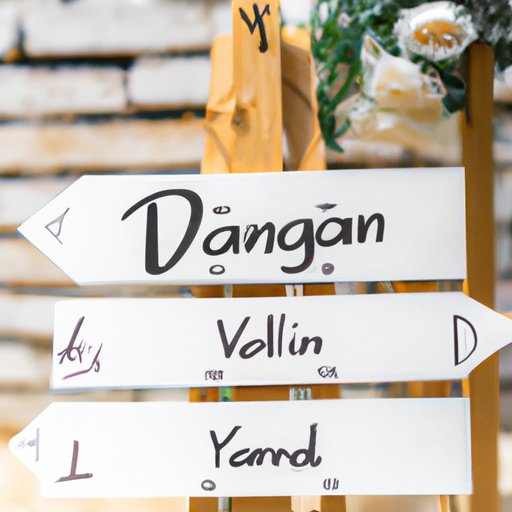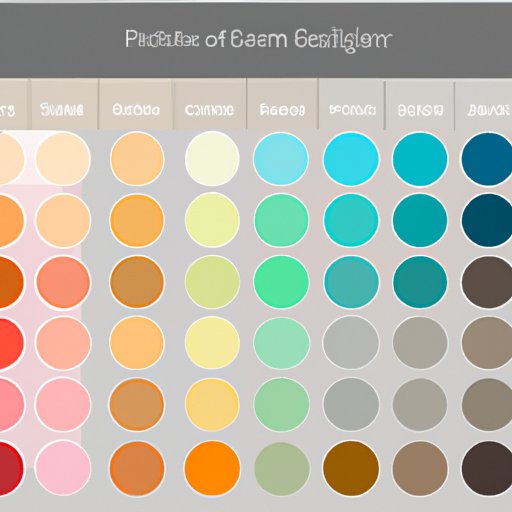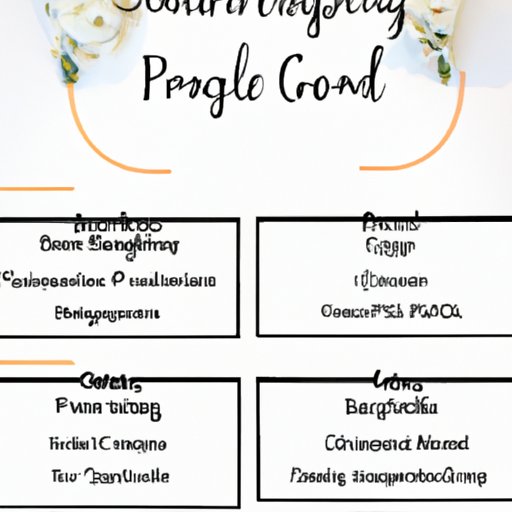Introduction
Planning a wedding is an exciting time for couples, but it can also be overwhelming. With so many details to consider and decisions to make, it’s easy to become overwhelmed. The good news is that with proper planning, you can easily manage the process and enjoy the journey along the way.
This article will provide an overview of the key steps to help you get started planning your wedding, from creating a budget to selecting vendors and organizing your guest list.
Create a Budget and Determine Who is Paying for What
Creating a budget is one of the first steps you should take when planning your wedding. You’ll need to determine how much money you have to spend and who will be responsible for payment. It’s important to be realistic about what you can afford and to stick to your budget.
According to the Knot’s 2019 Real Weddings Study, the average cost of a wedding in the United States is $33,900. However, the study found that couples are increasingly more likely to pay for their own weddings, with nearly half of all couples (49%) paying for the wedding themselves.
To stay within your budget, you may need to make some sacrifices. Consider which aspects of the wedding are most important to you and prioritize those. You can also look for ways to save money, such as having a small guest list or opting for an off-season wedding date.

Choose Your Wedding Date and Venue
After you create your budget, the next step is to choose your wedding date and venue. Consider the season and climate when selecting a date — if you’re getting married in a warm climate, you may want to avoid summer months to avoid excessive heat. You should also give yourself plenty of time to plan, as this will reduce stress and allow you to make informed decisions.
When researching venues, decide on the style you want for your wedding. For example, do you want a traditional church ceremony or a beachside celebration? You should also consider the size of the venue and the number of guests you’re expecting. According to The Knot’s 2019 Real Wedding Study, the average number of wedding guests is 136.
Other factors to consider include parking availability, catering options, and accessibility for elderly guests. Make sure to visit potential venues and ask lots of questions before making a final decision.

Select a Theme or Color Palette
Choosing a theme or color palette for your wedding is a great way to create a cohesive look and make the event memorable. Brainstorm ideas for themes or colors and select something that reflects your personalities and interests. You can use Pinterest or other wedding websites for inspiration.
Once you have a theme or color palette in mind, you can begin incorporating it into your decorations. Incorporate colors into your flowers, tablecloths, and other decorative elements. Your theme or color palette can also be used to create custom stationery, from invitations to thank you cards.

Hire a Wedding Planner or Coordinator
Hiring a wedding planner or coordinator can be a great way to make the planning process easier. A professional can help you create a timeline, find vendors, and manage the details of the event. They can also help you stay on track and within your budget.
When searching for a wedding planner or coordinator, take the time to research potential candidates and read reviews. Ask questions and review contracts to ensure that you understand the terms and services provided. It’s also important to make sure that you’re comfortable working with the person and that your communication styles are compatible.
Research and Book Vendors
Once you’ve established a budget and chosen a wedding planner or coordinator, you can begin researching and booking vendors. Start by identifying the vendors you need, such as a photographer, caterer, and florist. Research potential vendors and compare prices to ensure you’re getting the best deal.
When speaking with vendors, be sure to ask questions about their experience and services. Review contracts carefully and make sure that you understand the terms and conditions. Additionally, ask for references and follow up with former clients to get a better understanding of the vendor’s work.
Begin Creating Your Guest List
Creating your guest list is an important step in the wedding planning process. Decide how many guests you want to invite and organize your list into categories, such as family, friends, and coworkers. Start by inviting relatives and close friends, then work your way down the list.
Managing the invitation process can be tricky, so it’s important to keep organized. Create a spreadsheet with contact information and track RSVPs as they come in. You can also create a schedule for sending out invitations and thank you cards.
Conclusion
Planning a wedding can seem daunting, but with proper planning and organization, you can make the process manageable. Start by creating a budget and determining who will be responsible for payment. Then choose your wedding date and venue, select a theme or color palette, and hire a wedding planner or coordinator to help manage the details.
Don’t forget to research and book vendors and begin creating your guest list. With careful planning, you can make your wedding day a success.
(Note: Is this article not meeting your expectations? Do you have knowledge or insights to share? Unlock new opportunities and expand your reach by joining our authors team. Click Registration to join us and share your expertise with our readers.)
